This update on ESLT’songoing restoration projectat the Benton Ponds is written by ournew Education Coordinator & AmeriCorps Member, Catherine Tao. For more aboutCatherine, Click Here.
With hatchets, pipe wrenches, and buckets in hand, our 4-person work team followed the well-worn path leading up to the pond at Eastern Sierra Land Trust’s Benton Hot Springs Ranch Conservation Easement. The morning air was chilly, so we wore as many layers as we could manage underneath our waders. Resembling Oompa-Loompas, we prepared to break the ice and enter the frigid water. A Polar Plunge in the dead of winter? Not quite but close!
As ESLT’s Education Coordinator & Americorps Member, I have joined Board Member Tim Bartley, Steve Parmenter, Senior Environmental Scientist with the California Department of Fish and Wildlife, and Lands Conservation Program Director Sus Danner on recent visits to our Benton Ponds restoration site. For the past few years, ESLT has been working on a conservation project here to build habitat for the Owens Speckled Dace.
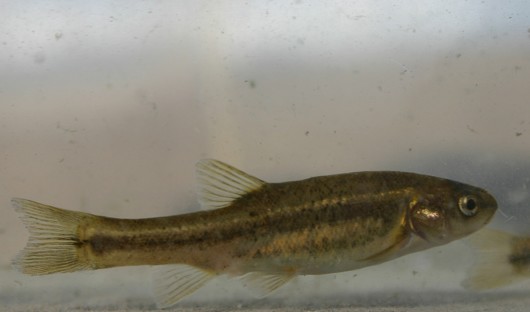
The Owens Speckled Dace: a small fish with a long history (and hopefully a brightfuture too!) Photo source: University of California, Division of Agriculture and Natural Resources.
The Speckled Dace is one of four species of fish that survived the Long Valley Caldera Eruption that occurred 760,000 years ago. Different forms have evolved over the centuries, and one, the Owens Speckled Dace, residesin streams, ditches and ponds in the Owens Valley. Until 1938, these resilient desert fish could be found in Blind Springs Valley, a unique reservoir fed by the natural springs that todayfeed into the Benton Ponds. However, due to habitat disruption, Owens Speckled Dace numbers havegreatly diminished. So ESLT has teamed up with our friends at CA Department of Fish and Wildlife to bring back these nativefish and with these relics of prehistory, hopefully get a glimpse into our region’s natural past.
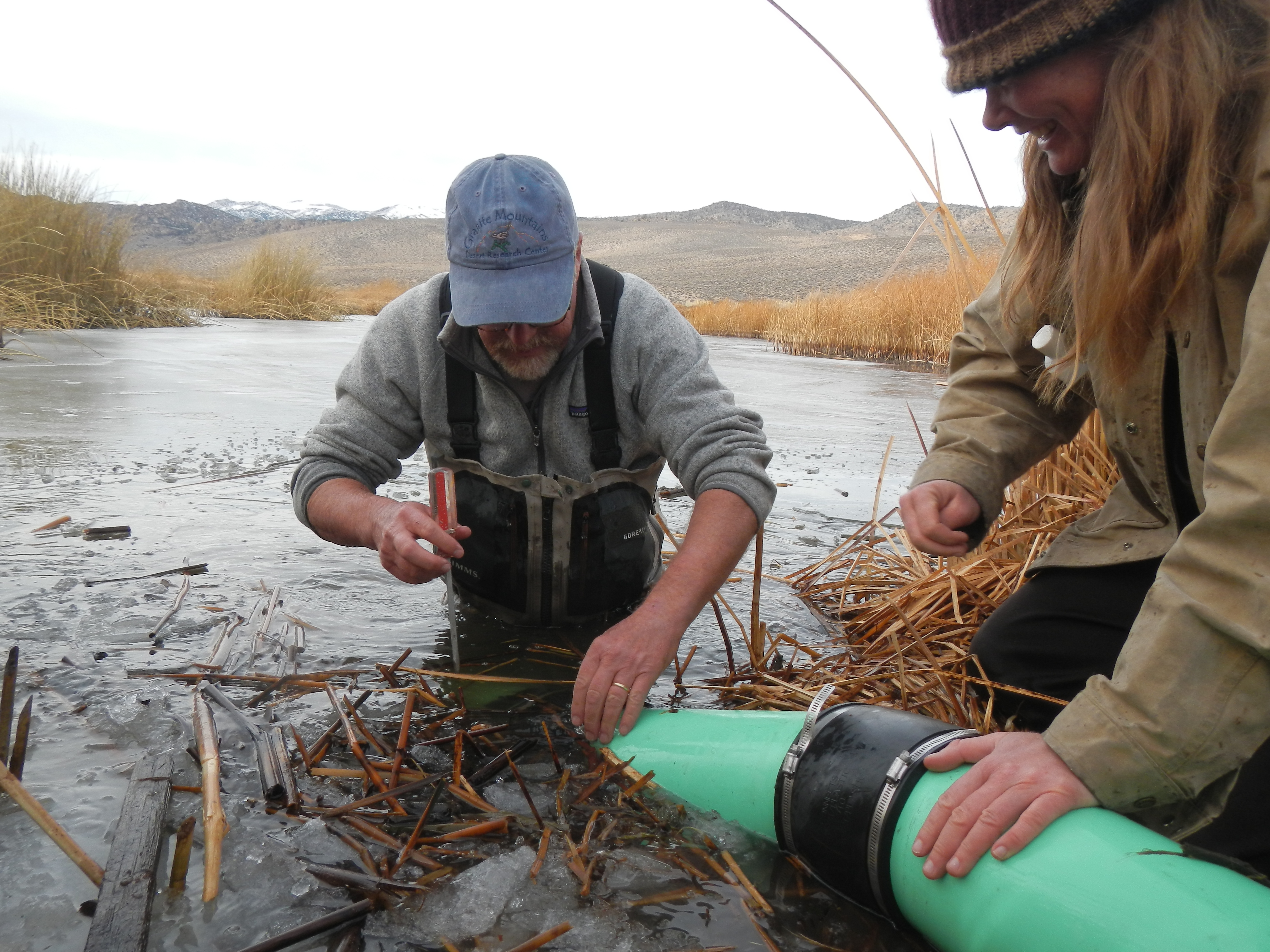
With Sus’s help, Tim wades into the icy water to manipulate the siphon.
A critical step in the process of returning the Speckled Dace to its natural habitat is the removal of cattails and hardstem bulrush. If left unchecked, these plants rapidly overtake open water habitat. Their removal not only benefits the Owens Speckled Dace, but also dramaticallyimproves habitat for yellow-headed blackbirds, harrier hawks, ibis, and many more bird species.
We’ve been hard at work all winter preparing the pond for the next phase of our project. We recentlyinstalled a siphon in order to lower the pond level enough to access the lower stems of the aggressive aquatic plants—critical to permanently eradicating them. And getting waist-deep in icy water is just standard protocol for ensuring our siphon’s success!
Years in the making, our habitat restoration project at the Benton Ponds is now advancingquickly. During this most recent visit, we determined that the pond is now at the right level to move forward withour plans. Stay tuned to hear about theexciting next steps in our restoration process!
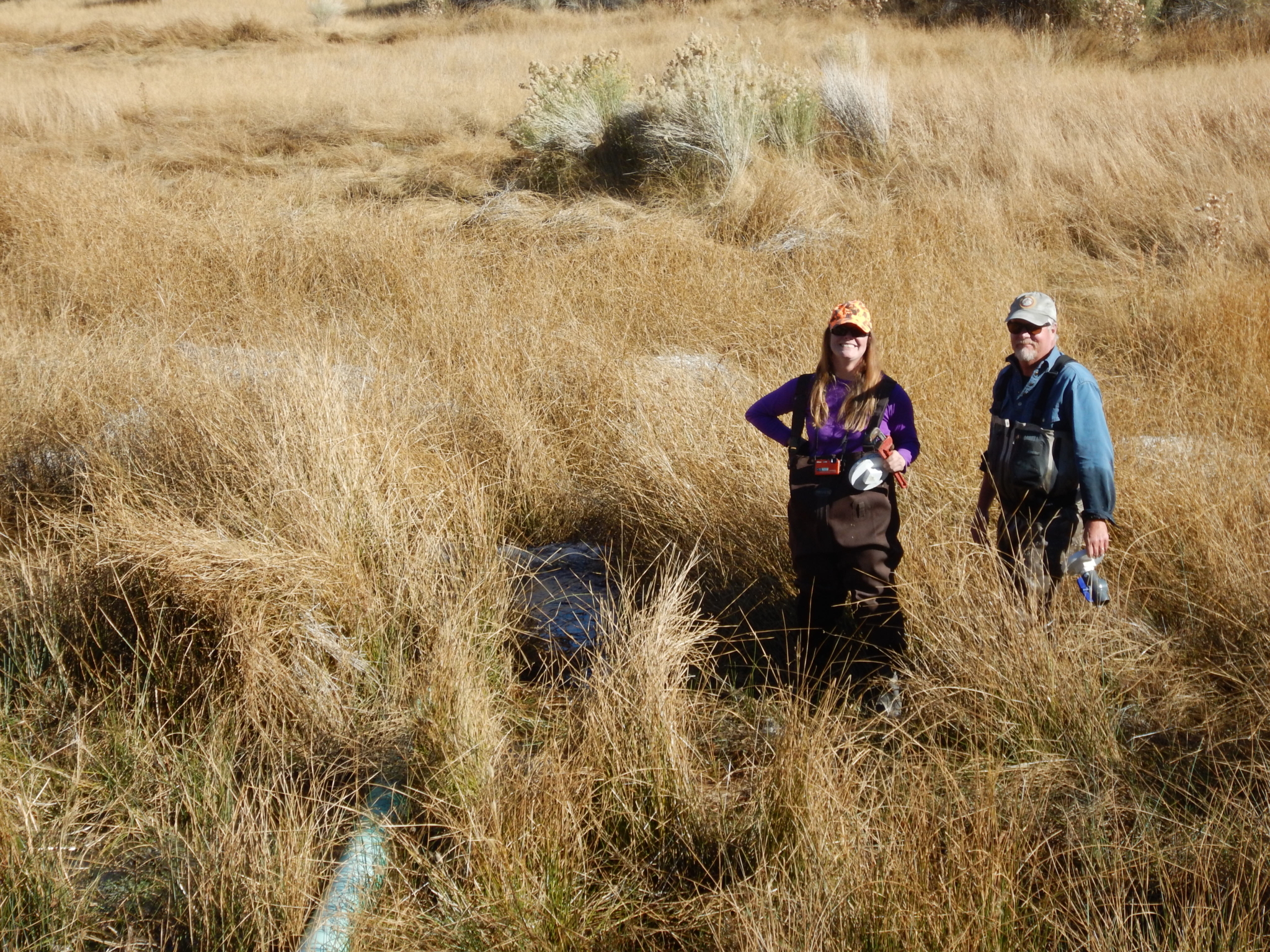
It works! Susand Tim can’t help but grinas the siphon does its job.


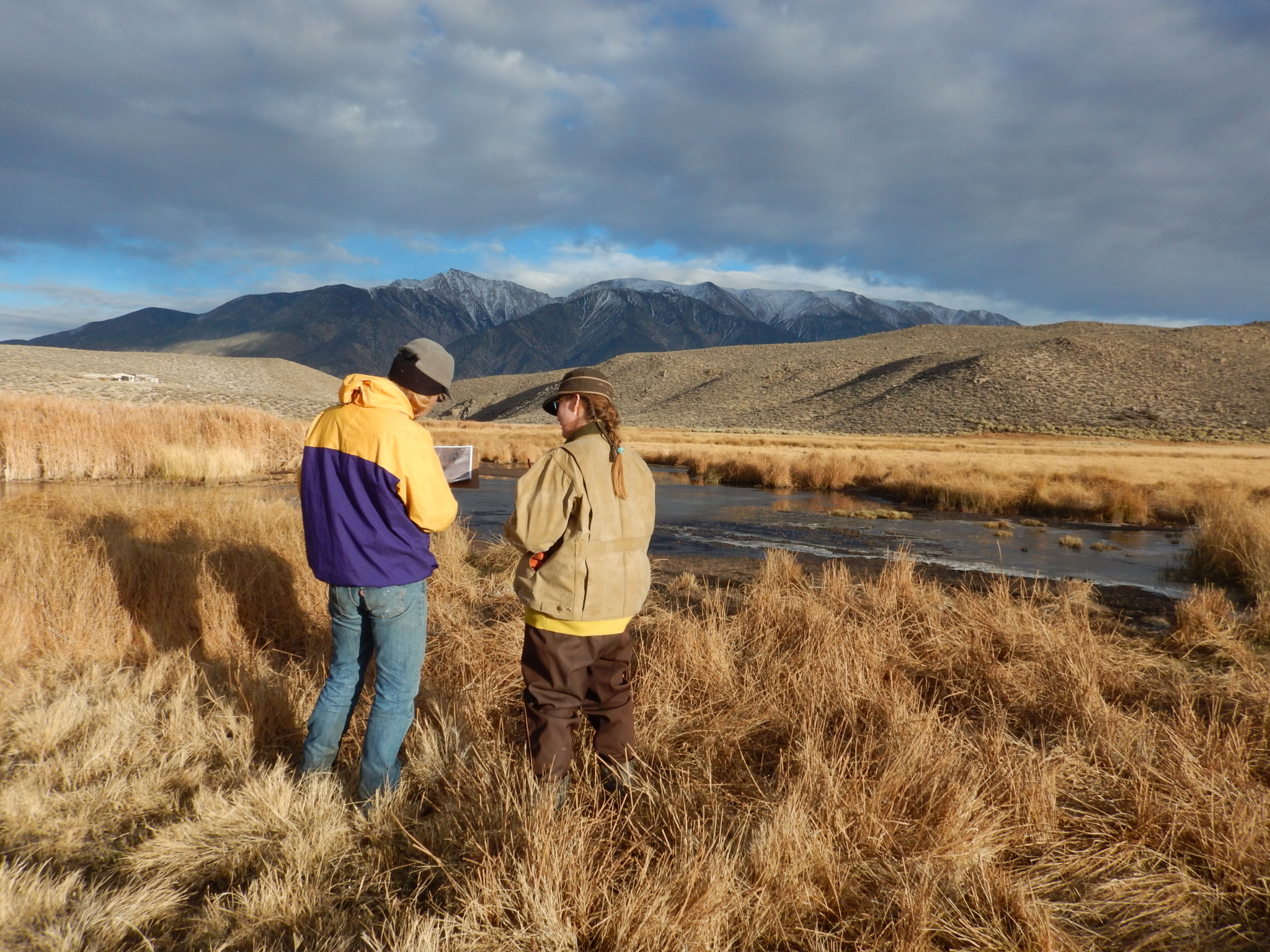
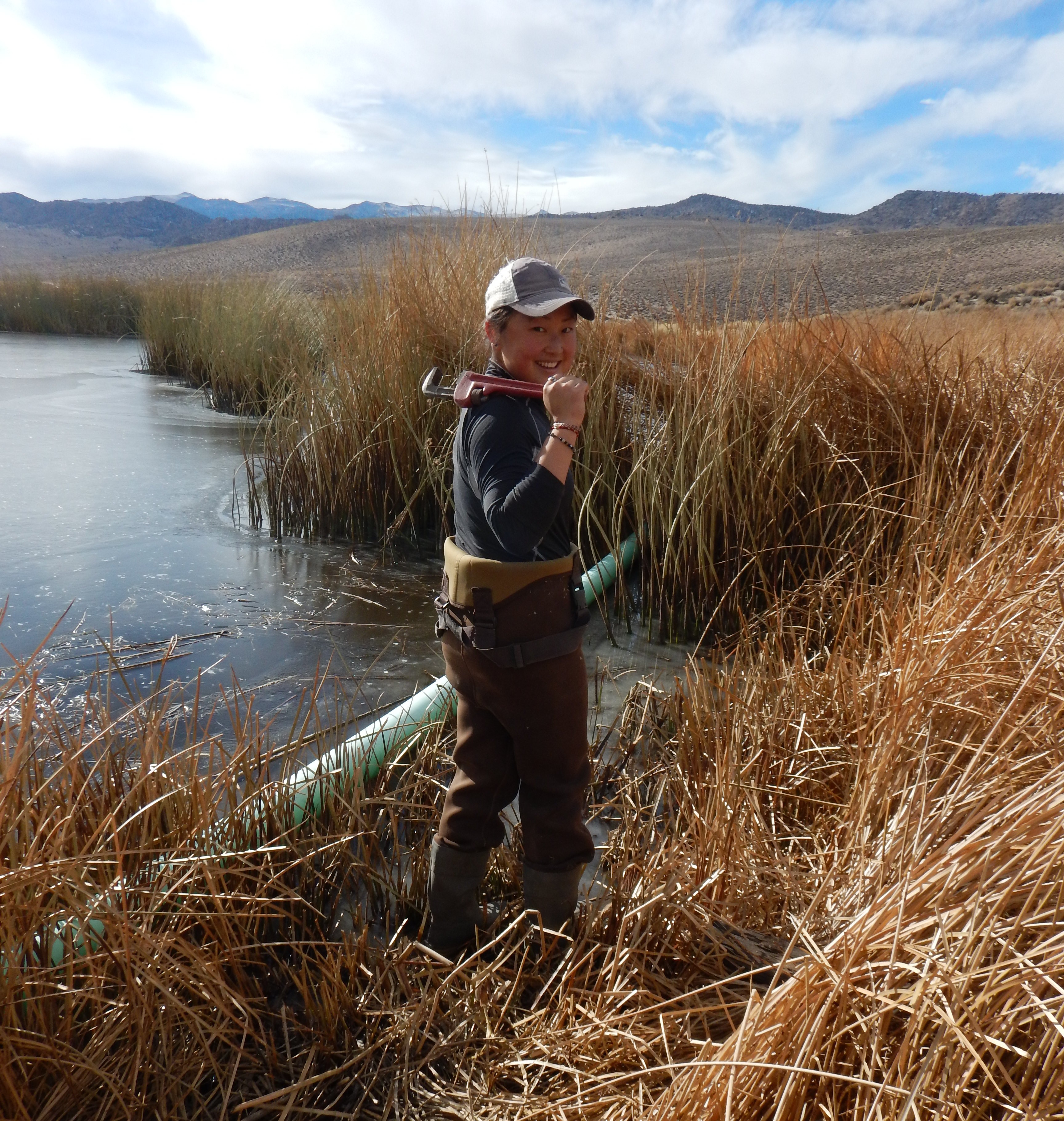
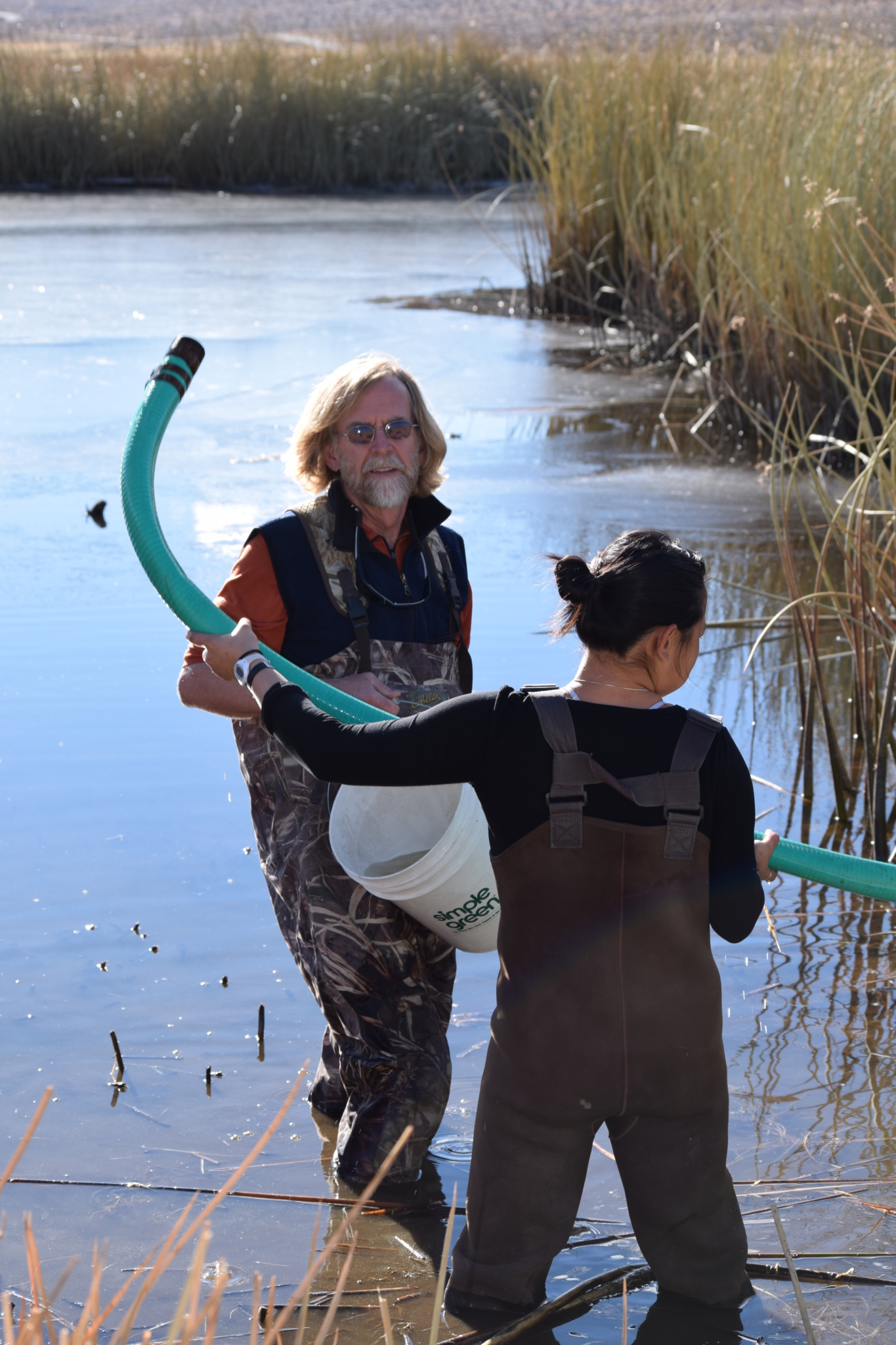
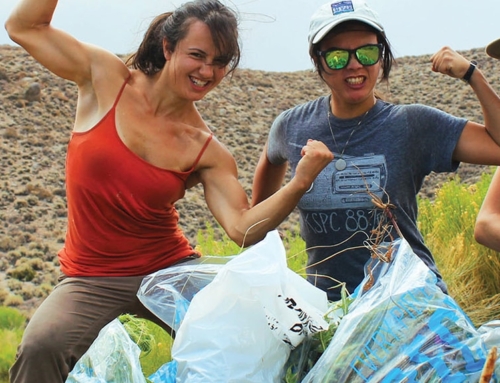
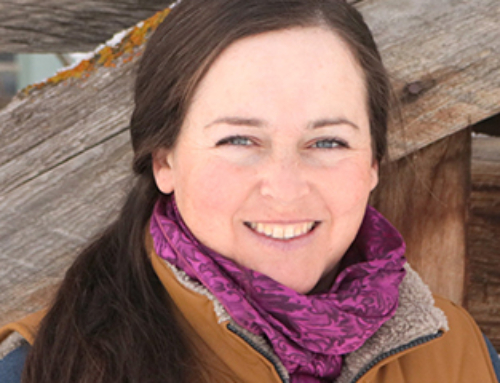

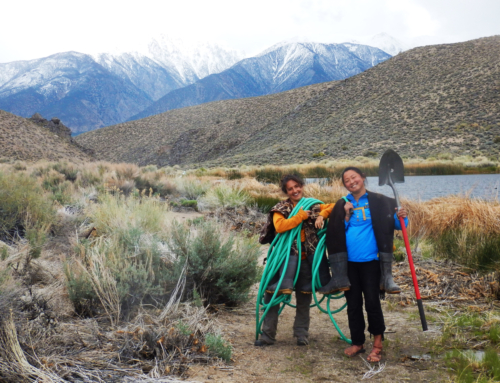
[…] our ongoing work to conserve and restore our beautiful Eastside — rain or shine, or… ice!. Now we need your help. This spring, lend a hand on the land during one of our upcoming […]